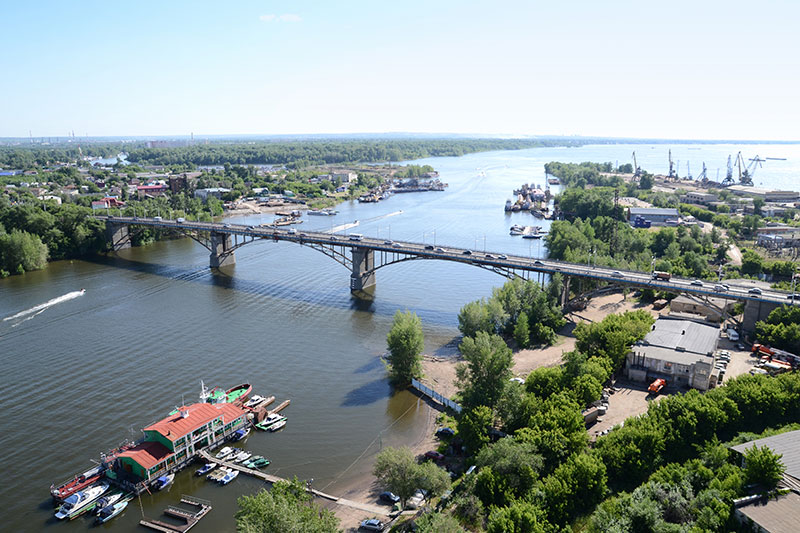Samara
According to one version, the name of the city traces back to the Greek words SAMAR for merchant, and RA – the ancient name of the Volga River. According to another version, the city was named after the Samara River, which flows into the Volga near the city. In the language of the Turkic steppe nomadic tribes, Samara meant “steppe river”.
The City of Samara was first mentioned in Russian chronicles dating back to 1361. Samara port was first marked on the map of the Volga in 1367 by Venetian merchants Francesco and Domenico Pizigano.
The City of Samara was founded by order of Tsar Feodor in 1586 as an outpost, named Samarsky Gorodok. In 1935-1991, the city was named Kuybyshev after the Soviet party figure Valerian Kuybyshev. Samara’s population is 1,172,034 people (as of 2014), making it the seventh largest city in Russia.Samara is located on the left tall bank of the Volga, across from the Samara Bend, where the Samara River flows into the Volga.
Samara is a major economic, transport, science-and-education and cultural centre of Russia. The city’s main industries are machineengineering, oil processing and the food industry. Samara is one of Russia’s leading science centres. It boasts 10 colleges and 4 universities, which offer an array of programmes.
Samara has the longest embankment in Russia and the tallest railway station building in Europe. Additionally, Kuybyshev Square is the largest square in Europe.

 RU
RU  EN
EN  CN
CN  ES
ES